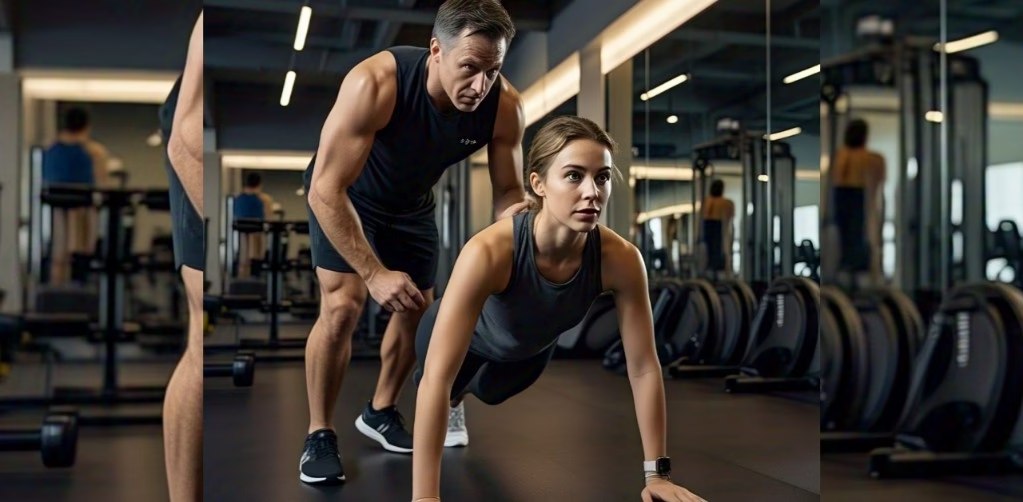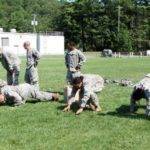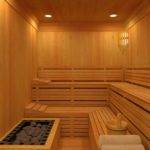
Table of Contents
Apart from the basic life activities like walking, running, squatting, sitting, and standing; most other engagements that involve complex drills require some form of training and exposure. The same can be said of burpee exercises. To perform them safely and derive their benefits, burpees require a bit of learning, adaptation, and exposure.
For people just starting their fitness journey, burpees represent a good addition to a beginner calisthenic exercise. However, it should be approached with caution to avoid injuries and guarantee effectiveness as part of a healthy workout plan.
We have discussed some aspects of burpee exercises in previous articles such as broad jump burpees, half burpees, and prison burpees. There were mentions of burpees for beginners in those articles, however, we’ll delve deeper into beginners’ approach to burpee workouts in this write-up.
Do keep in touch by signing up for our newsletter:
How to do burpees for beginners?
Burpees are important workouts that combine strength and endurance training, making them great workouts for beginners, fitness programs, and professional athletes. However, there are step-by-step instructions you have to adhere to to build your fitness level while reducing the risk of any form of injury.
We gave a detailed guide on how best to do burpees in the right way in a previous article you’ll want to check out. More importantly, we also listed detailed adjustments beginners should make on the traditional burpee to make it easier for them as starters.
Maintaining a proper form throughout the exercise is essential to maximize the effectiveness of burpees without injuries. Ensure your knees don’t extend beyond your toes during the squat, and keep your core engaged during the plank phase and jump.
With regular practice, you will eventually adapt to the workout, increase your stamina, and experience the benefits of engaging in burpees.

How many burpees is optimal?
It’s important to start with a number of burpees that align with your starting fitness level and gradually step up as your exercise endurance and fitness level improve. Beginners may start with 5 to 10 burpees per set while focusing on the maintenance of a proper form rather than maximizing repetitions.
Getting through 2 to 3 sets within a workout session and allowing recovery between sets is advisable. This cautious approach fosters initial progress in boosting your fitness level while reducing the risk of excessive fatigue or potential injury.
Listening to your body is important during this process. As you get accustomed to the exercise, you may feel comfortable increasing the number of burpees per set or adding more sets to your routine.
A recommended progression could be an increase of 1 to 2 burpees weekly or gradually adding an extra set when you deem fit.
Adding rest days for recovery into your workout schedule is crucial. Adequate recovery allows your muscles to heal and adapt, leading to improved performance in subsequent workouts. Over time, this gradual increment of burpees will help you achieve a greater fitness level.
Ultimately, starting slowly and increasing your repetitions gradually will yield the best results. Remember, each individual’s fitness level is unique. Therefore, adjusting the number of burpees to fit your circumstances plays a significant role in ensuring a safe and productive workout experience.
Burpees for overweight beginners.

For people beginning their fitness journey with excess weight, the prospect of engaging in high-intensity workouts may seem daunting. However, burpees offer significant benefits for weight loss, overall fitness improvement, and fine-tuning body composition.
Starting with less tasking burpee modifications rather than the rigorous ones can be vital. For instance, beginning with a step-back approach while holding a chair instead of jumping into the full plank with hands on the floor.
By stepping into the plank position instead of jumping, one can still reap the benefits while mitigating the risk of injury. Additionally, performing the push-up phase on the knees can also be helpful.
As one’s fitness level improves with weight loss, including more elements of the traditional burpee is advised. Moreover, using a sturdy surface, such as a bench or low step for activities that may stress your joints, can assist in transitioning between movements, providing support during the initial learning phase.
Modified burpees for beginners.
For people new to fitness or beginning their journey in calisthenics, modified burpees are good entry points to the main or full burpee workouts. Variations such as the half burpees and chair burpees provide a much less rigorous approach to burpees.
These modifications help starters build foundational strength and up their fitness before getting on the conventional burpees. Bottom-half burpees, for instance, present effective ways for newbies to get on low-impact exercises while reaping some of the benefits from traditional burpees.
The chair burpee, as mentioned earlier, is another option for beginners. This variation involves using a fixed or stable chair for assistance as shown in the image above. It helps with balance and offers you support while doing the rep.
In a chair burpee, from a standing position, the practitioner bends to place the hands on a chair rather than the floor. Then stepping backward rather than leaping, gets one into plank position before returning into standing.
The described modifications make burpees less tedious, allowing starters to build their core muscles and boost cardiovascular fitness. As their body adapts with improved strength, exercise enthusiasts will become better equipped to take on the challenges of conventional burpee workouts.
Burpees for beginners at home.

Performing burpees at home is a practical and effective way to enhance your fitness level without needing specialized equipment. To start, it is crucial to establish a designated workout space that is free of clutter and allows for sufficient movement.
Ideally, this space should be well-ventilated and equipped with a non-slip surface to ensure safety while performing the exercise. If possible, consider placing a yoga or exercise mat on the floor as shown in the image above, for its cushioning effect on your joints.
Beginners may find it beneficial to start with a warm-up followed by a set of burpees and additional bodyweight exercises to complement the workout. For instance, after a brief warm-up, try performing 5 to 10 burpees consecutively, taking a rest period afterward. As your endurance increases, gradually increase the number of repetitions.
Warm-ups, apart from their positive psychological effects, have been attributed to be beneficial by several temperature and non-temperature-related mechanisms according to a Journal of Sports Medicine.1 These mechanisms have been identified as:
Temperature related:
- Increased nerve conduction rate,
- Decreased stiffness,
- Increased anaerobic energy provision, and
- Altered force-velocity relationship.
Non-temperature related:
- Elevation of baseline oxygen consumption,
- Effects of acidaemia, and
- Increased post-activation potentiation.
For a balanced workout, pairing burpees and other calisthenic exercises can yield excellent results. This combination not only increases cardiovascular benefits but also fosters a comprehensive approach to fitness at home.
By focusing on proper form during each burpee, beginners can maximize their workout efficiency and minimize the risk of injury. Proper execution involves a fluid motion that seamlessly transitions from a standing position to a squat, then plank, and back again to a jump finish.
Through consistent practice and dedication, burpees can become an integral part of your fitness journey at home.
Burpees for seniors.
Burpees are beneficial for seniors pursuing fitness. They have similar effects on the elderly as other exercises which include but are not limited to improved bone density and muscle mass as published in a Journal of Sports Medicine.2 However, older adults need to approach this workout with caution and modify it to suit their current fitness level.
By including burpees in their routine, seniors can effectively improve their body composition, reduce fat mass, and enhance endurance without excessive strain. Starting with modified versions can ensure safety while still providing the benefits associated with calisthenics.
A beginner-friendly option for seniors, in general, would be to eliminate the jump phase and also step back into the plank position, followed by simply stepping forward again before standing up. This alteration reduces the impact on the joints while activating the core muscles and improving cardiovascular capabilities.
Furthermore, a chair can be used to support the push-up phase or as a means to elevate the upper body during certain phases of the movement. Through these adaptations, seniors can perform burpees safely while improving their fitness levels.
Finally, it is important for seniors to also focus on more holistically structured workouts that include stretches for flexibility. This is essential for the health of aging musculoskeletal systems.






























































































































































